Submitted by WA Contents
Cobe unveils The Opera Park with flower-shaped greenhouse and atrium in Copenhagen's inner harbor
Denmark Architecture News - Nov 22, 2023 - 10:27 3963 views
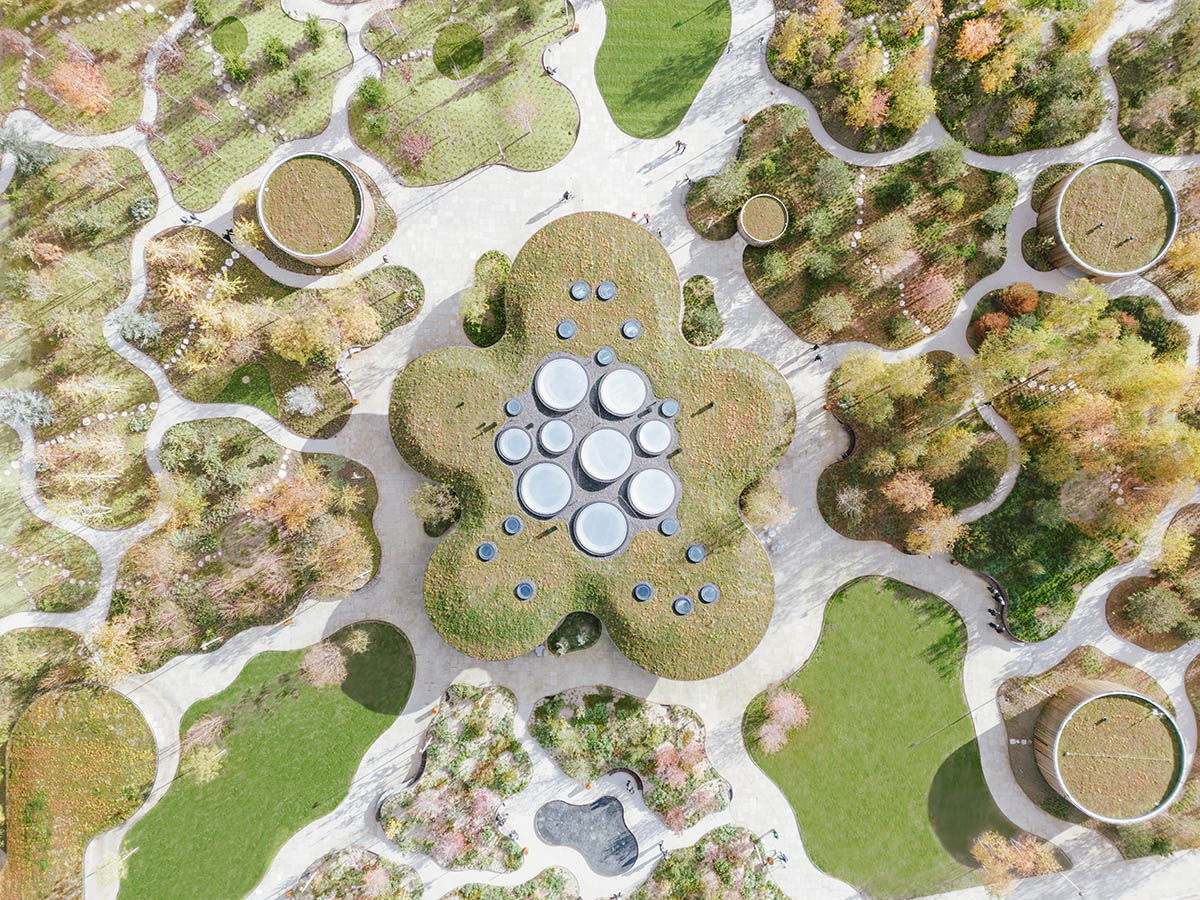
Danish architecture studio Cobe has completed The Opera Park, a new park situated at a former industrial island in Copenhagen’s inner harbor in Denmark.
The Opera Park is located between The Royal Danish Opera and Cobe’s soon-to-be completed Paper Island, aiming to create green recreational spaces which have become more and more scarce in the current construction boom.
Cobe transformed one of the inner harbor’s prime locations in the heart of the dense and historic city center into a lush, green park island, featuring six gardens and a flower-shaped greenhouse and atrium.

According to Cobe founder Dan Stubbergaard, the park takes references from "the seizes elements of Copenhagen’s historical, romantic gardens," and reinterprets them to today's challenges.
In 2019, Cobe won a design competition to create a new park at a former industrial island in Copenhagen’s inner harbor, which was approved by The A.P. Møller Foundation.
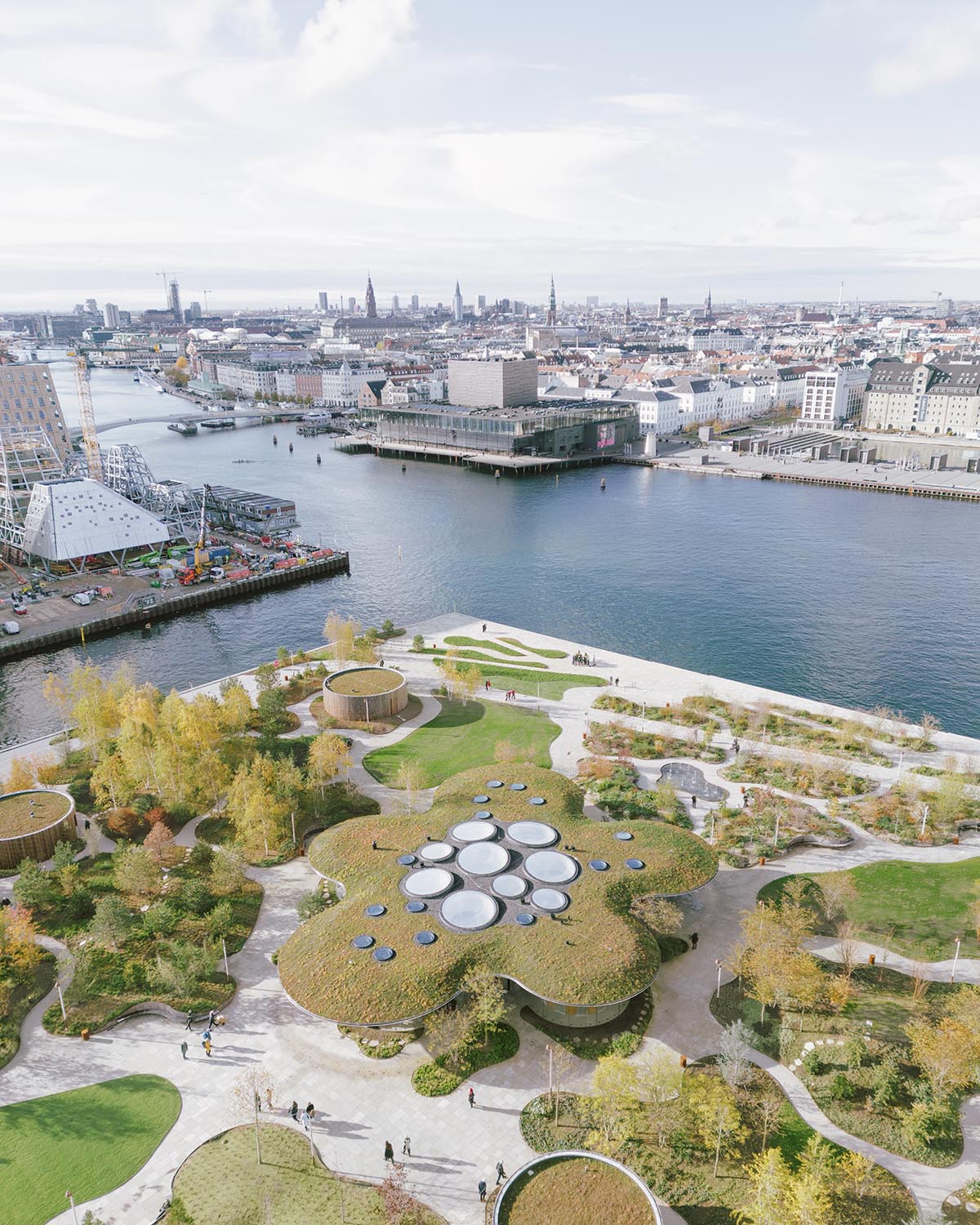
Located adjacent to The Royal Danish Opera, the site had been a modest green lawn since the completion of the Opera nearly 20 years ago.
The site was completely transformed today, the island which was otherwise prime for the development of new housing, is now home to a diverse and natural landscape.
The Opera Park acts as a new public harbor-front park that offers a green counterpoint to the otherwise densely built inner harbor of Copenhagen.

Covering a total of 21,500-square-metre area, the park has three soccer fields and six gardens from various parts of the world: the North American Forest, the Danish Oak Forest, the Nordic Forest, the Oriental Garden, the English Garden, and the Subtropical Garden housed within a greenhouse and atrium at its center.

With its diverse gardens, the gardens are enriched with other elements such as a fountain, a water lily pond, and a reflecting pool where drops of water from a mast gently strike the water’s surface in a soothing rhythm.
Besides, it incorporates meandering paths and organically shaped flowerbeds knit together the park’s elements.

"A much-needed green oasis"
"The Opera Park is a place where nature comes first amidst Copenhagen’s bustling urban development," said Dan Stubbergaard, Founder of Cobe and Professor at Harvard University.
"With its six gardens, winding paths and carefully crafted viewpoints, the project seizes elements of Copenhagen’s historical, romantic gardens to tackle today’s challenges such as decline in biodiversity and water management."
"Designed for recreation, relaxation and contemplation, the park provides the city with a much-needed green oasis," he continued.
"As you stroll through the park, you get the feeling of having left the city and being immersed in nature, almost forgetting you are in the middle of the dense city center," Stubbergaard added.

A year-round oasis, setting the stage for all kinds of life
The park was designed as much inviting as possible; it acts as a all year-round public attraction. The park features no less than 628 trees, 80,000 herbaceous perennials and bushes, and 40,000 bulb plants, from all around the world.
In total, 223 unique exotic and local species provide a vibrant and ever-changing backdrop for visitors.
The studio has paid attention to the overall appearance of the vegetation in which it scent, color, and density vary with the seasons.
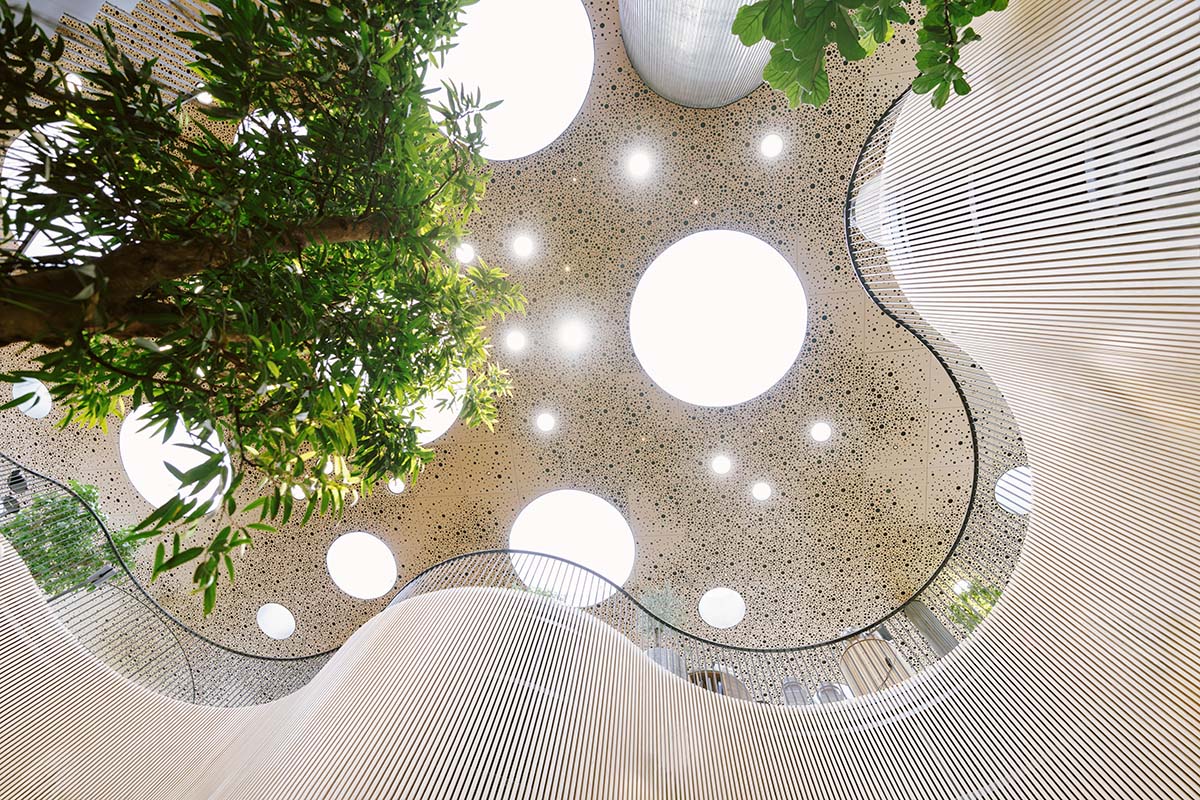
The Opera Park is "like an opera stage"
"Spring blooms in a rich color palette, summer brings various shades of green, autumn showcases red and yellow tones, and winter is dominated by evergreen pine trees and frozen ponds," said Cobe.
"The wide variety of plant species and diversity of sizes provides a rich environment for birds and insects to find food and shelter," the studio added.
"The Opera Park sets the stage for experiencing nature in the heart of Copenhagen," said Dan Stubbergaard. "Like an opera stage, the park is a composed landscape with a foreground, a middle ground and a background."
"The 80,000 plants and 600+ trees are placed to naturally create a scenic setting facing the harbor. The terrain and trees are tallest where they create the background, and lowest in the foreground towards the harbor," Stubbergaard continued.
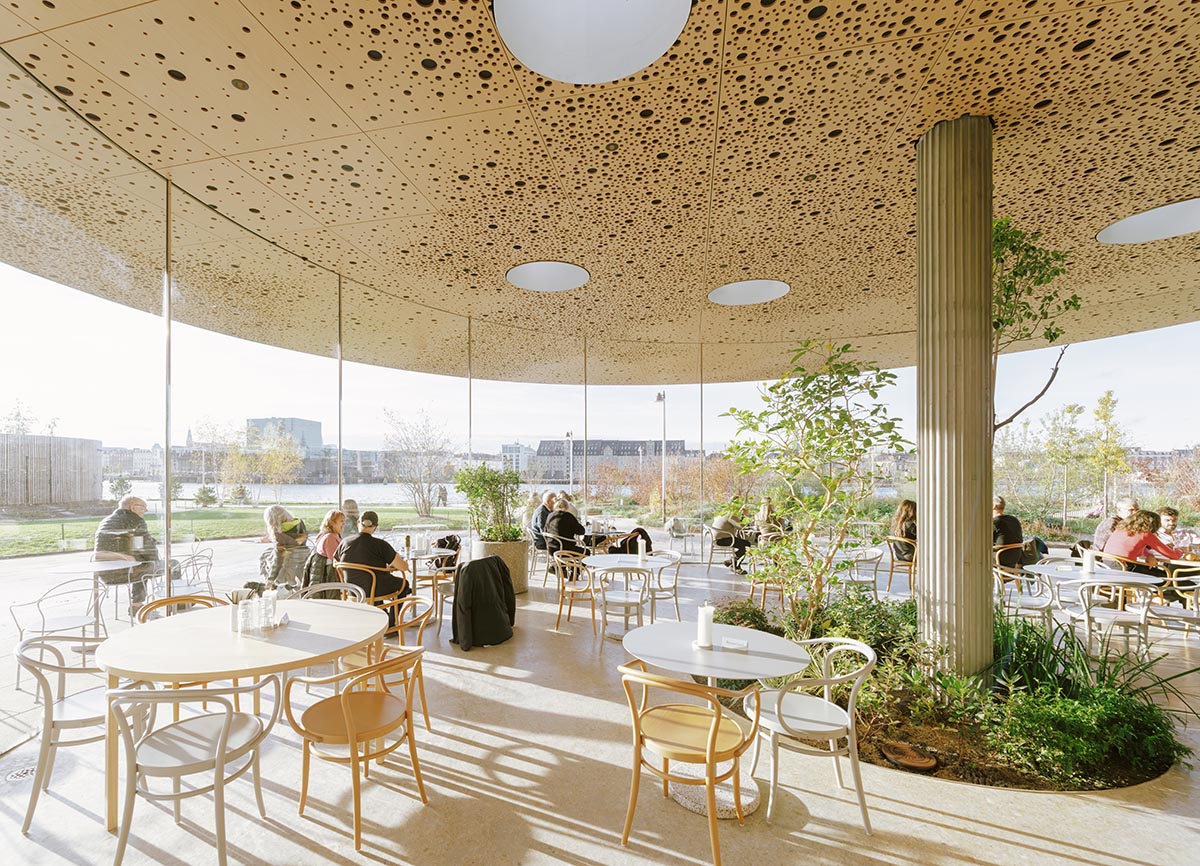
A greenhouse at the heart
At the heart of the gardens, a central flower-shaped greenhouse makes a bold statement with its distinguished shape. There is also a café, giving access to car parking underneath the park’s surface.
Cobe designed the greenhouse in an organically-shaped glass structure with a hovering roof, which was intended to "surprise and delight visitors as they navigate the lush landscape."
"The greenhouse and café will ensure that The Opera Park remains a vibrant destination year-round, even during winter when many of Copenhagen’s parks are desolate," said the office.

Inside, the greenhouse terraces down to the parking levels, which accommodate up to 300 cars, while its subtropic biotope also descends to vertically weave together the park with the underground levels.

A covered connection to the Opera
The park also offers a covered connection to the adjacent Royal Danish Opera via a covered walkway atop a landscaped bridge. The walkway provides a weather protected link between the parking facility and the Opera.
The walkway’s curved glass and floating roof, echoing the architecture of the greenhouse, evokes the landscape design in its meandering path.

"As one of three bridges to the island, the connection is designed as a piece of nature crossing the harbor canal, fully integrating landscape and architecture into one," Cobe added.

Benefitting from rain and sun
Cobe conceived rainwater as a valuable resource for the park, and it is channeled from the roof of the Royal Danish Opera into underground water reservoirs used for greenhouse irrigation.
Pathways are designed with a permeable gravel surface, and excess rainwater is collected in rain beds for infiltration and evaporation.

The green roofs of the landscaped bridge and greenhouse capture and delay the release rainwater to the site while also serving as a food source for the park’s fauna.
Solar panels on the Opera’s roof provide power to the underground parking facility, the park and the greenhouse.

The park’s chosen materials are robust and fully recyclable, while the abundance of trees and plantings shield against strong winds coming from the harbor and the sea, reducing turbulence and increasing the level of comfort for park users.
Furthermore, the elevated terrain safeguards the island from flooding during heavy rainfall and significant rises in the harbor water level.

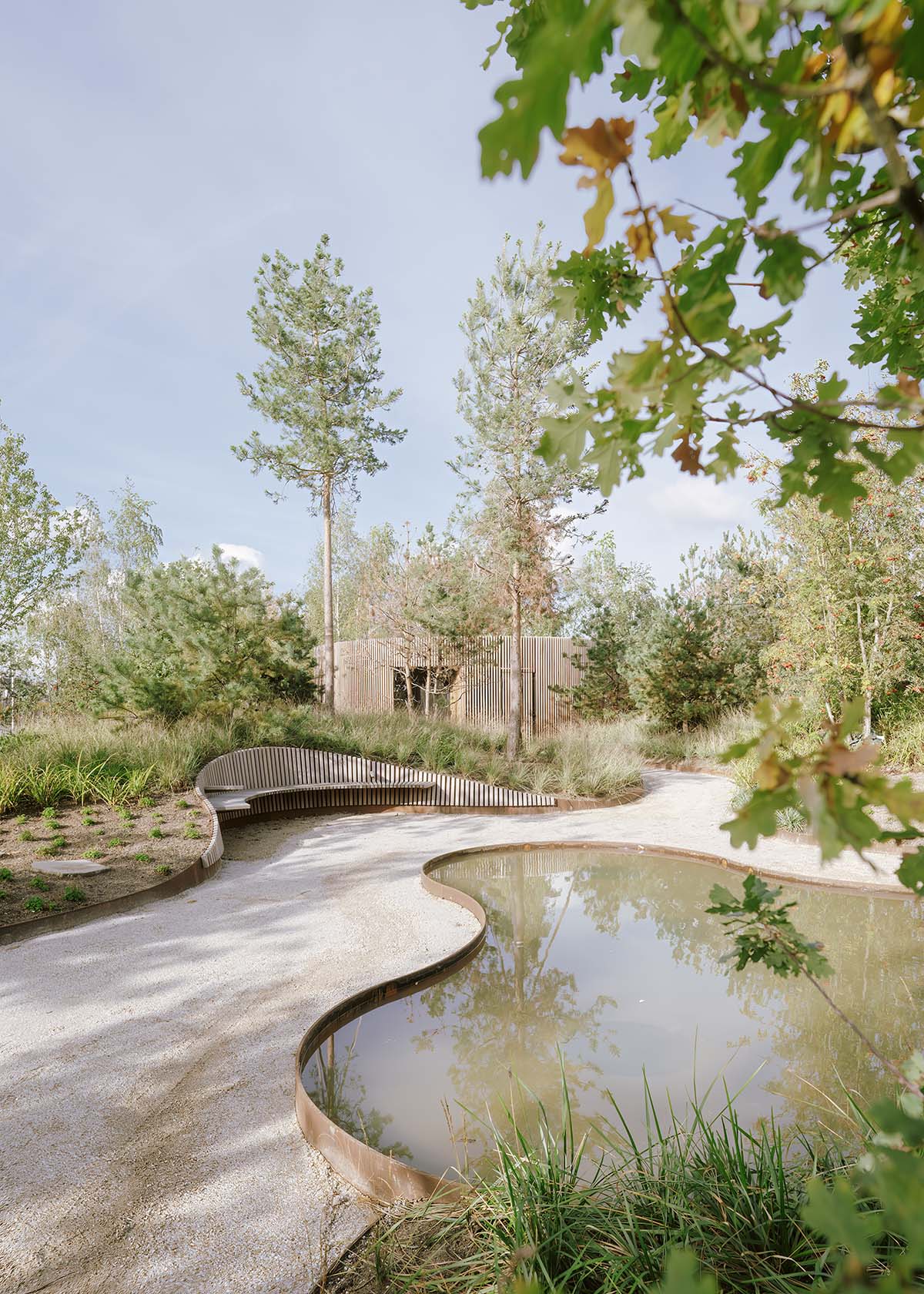






Greenhouse floor plan
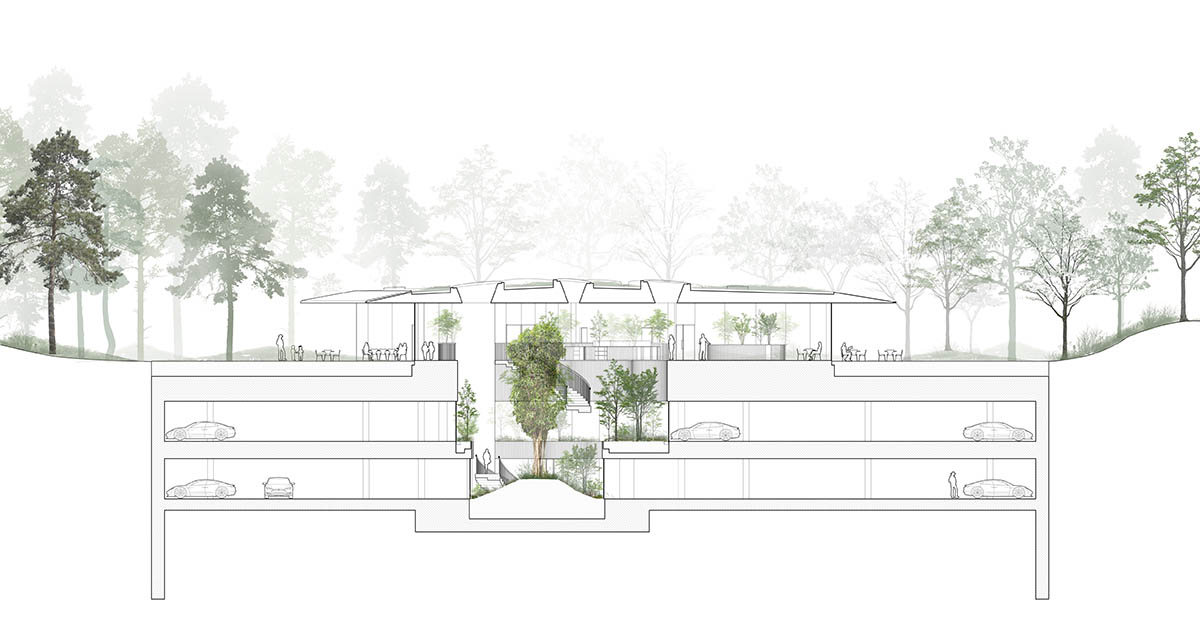
Greenhouse section
Cobe and Finnish Lundén Architecture Company won a competition to design a municipal building in the Finnish city of Espoo, Finland.
The firm is designing a new university library in the heart of Sweden’s second-largest city, Gothenburg. The firm revealed design for a design center for global automaker Geely in Sweden.
Cobe was founded in 2006 by architect and Professor at Harvard University, Dan Stubbergaard. The studio's ambition is to create surroundings that actively contribute to extraordinary everyday living.
Project facts
Project name: The Opera Park
Architect and landscape architect: Cobe
Location: Copenhagen, Denmark
Client: The Opera Park Foundation
Donation: The A.P. Moller Foundation
Size in total: 21,500 m2
Size greenhouse: 680 m2
Engineers: Vita, Via Trafik, DBI and Lüchninger Meyer Hermansen
Contractors: Hansson og Knudsen, Bauer, Redtz Glas og Façade, HSM Industri, GK Danmark, Bravida Danmark, Høyrup & Clemmesen, KONE, Phønix Tag, Jakon, Areo, Terrazzo.dk, Raadvad Maleren, Snedkerierne, OKNygaard, Palmproject Europe, Scanview Systems, Zurface, Retail Reflexions, Vector Foiltech
Parking spaces: 300
Charging stations: 48 AC chargers and 1x2 DC chargers
Bicycle parking spaces: 100
Time period: 1st prize in competition: 2019, construction period: 2020-2023
Completion: 2023
All images © Francisco Tirado.
All drawings © Cobe.
> via Cobe
